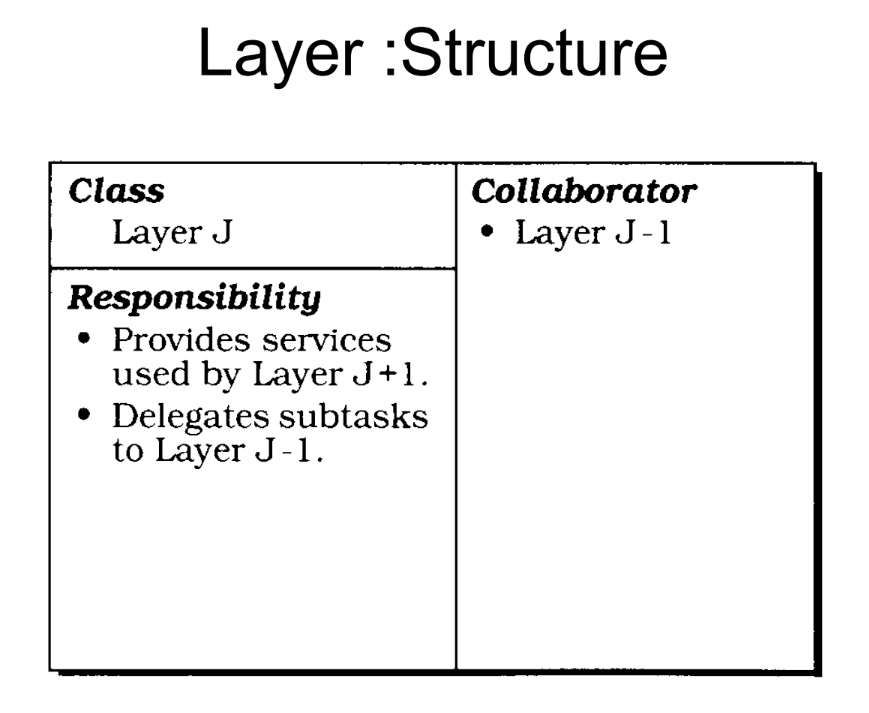A software architectural pattern that divides the system into horizontal layers, each providing service to the layer above it.
- Lower layers and hidden from upper layers

Variants
- Relaxed layer system
Some of the strict rules of the layered architecture are relaxed for increased flexibility and performance
- A layer can use services from any of it’s lower layers not just the immediate
- Layers can be partially opaque
- Layering through inheritance Upper layers can optionally override service offered by lower layers
Usage
- OSI Architecture
- Virtual machines - JVM has layers for binary byte-code format, runtime, and Java libraries.
- APIs - Provide an encapsulation layer over lower level services.
- Information systems - UI, business logic, data access layers.
- Windows NT - Has systematic layers for services, resource management, kernel, hardware.
Benefits
- Reuse - Layers can be reused across applications.
- Interchangeability - Layers can be swapped via adapters or bridges.
- Standardization - Layers enable standards compliance.
- Localized dependencies - Only on the next lower layer.
Drawbacks
- Reduced efficiency - Each layer adds overhead.
- Cascading changes - Modifying lower layers affects upper layers.
- Finding right layer granularity - Too few or too many layers causes problems.
Example
In a simple web application, you might have a presentation layer responsible for the user interface, a business logic layer handling application logic, and a data access layer managing interactions with the database.